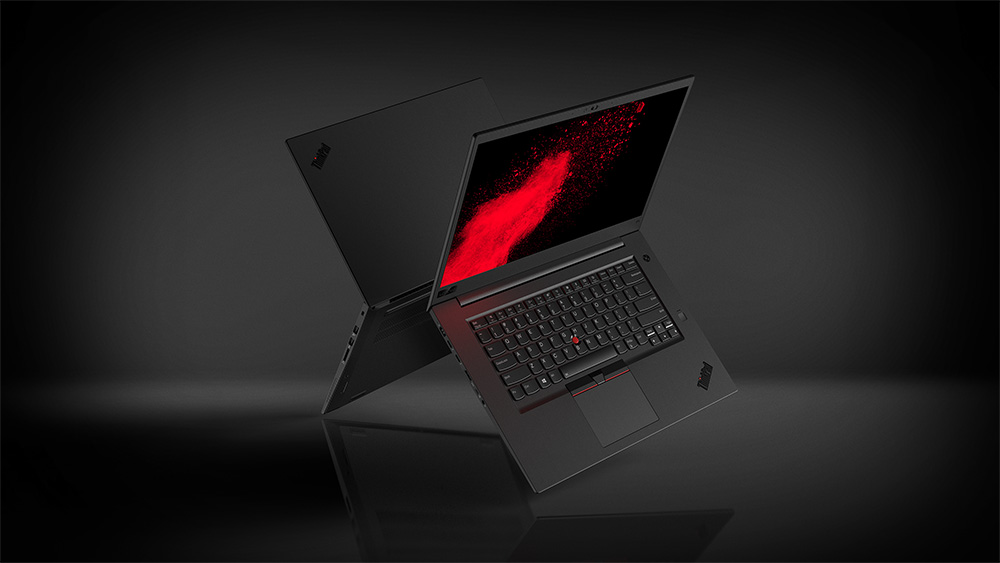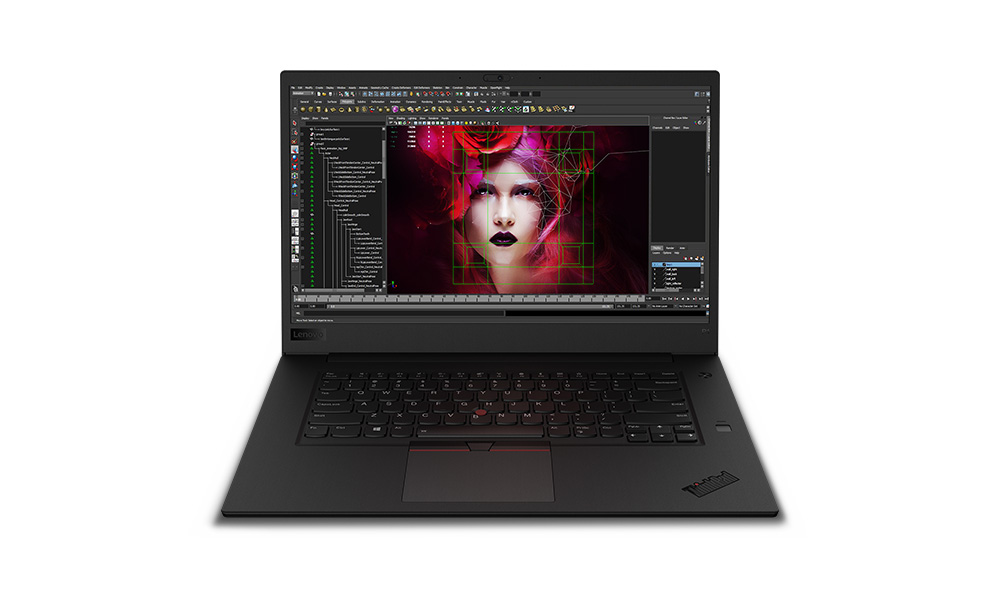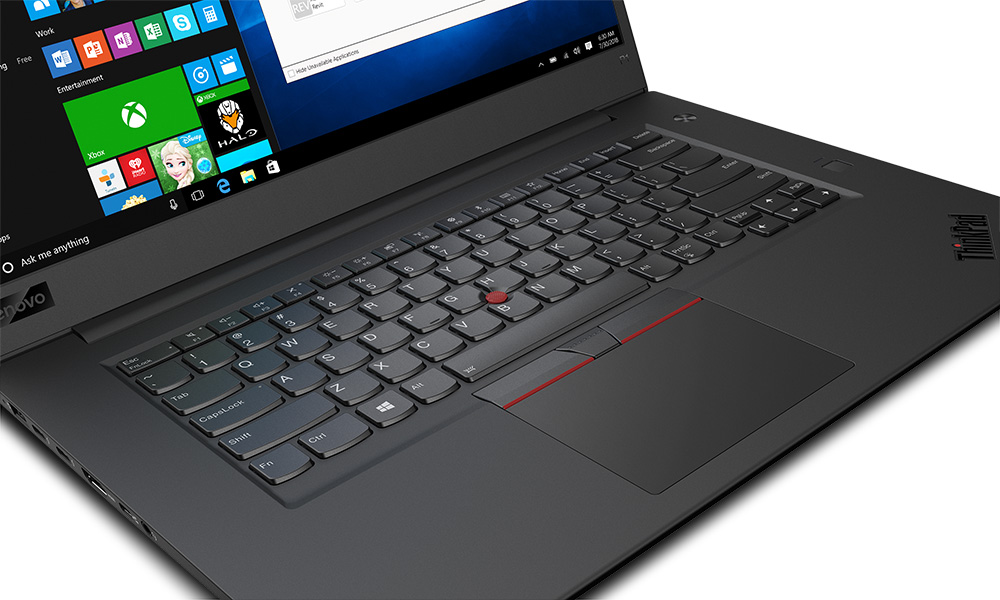Lenovo has often gone head-to-head with HP with its mobile workstations. Yet those efforts have fallen short of the mark for some high-end media-intensive applications. That could change with the introduction of the Lenovo ThinkPad P1. The P1 competes directly with the HP ZBook Studio G5. The match is close enough that you may want to take a look at the P1 to see if it’s a better fit for your needs — if you’re looking for a lightweight, but powerful, mobile workstation.
In terms of raw power, the two models share many of the same components. Both can be equipped with the latest-generation Intel Xeon E-2176M 2.7GHz CPU and NVIDIA Quadro P2000 GPU. (The Studio G5 can go a notch higher on the CPU end with the Xeon E-2186M 2.9GHz processor.) Both can expand all the way up to 64 GB of DDR4 RAM and 4 TB of NVMe-based SSD storage.
As for the differences, the ThinkPad P1 is somewhat lighter (when comparing similar configurations) and slightly smaller. The P1 also has a superior keyboard. In its favor, the Studio G5 has some advanced options that aren’t available on the P1, including an integrated privacy screen and the ability to swap out the second drive for additional battery capacity.
Both models offer an optional 4K UHD (3840 x 2160) screen, though there are significant differences between those displays. If you prefer a glossy screen, the P1 may be your inevitable choice. The P1’s glossy screen provides richer, more saturated colors, but the glare it produces can be a challenge in some environments, such as in bright sunlight or when you’re stuck on an airplane. The Studio G5’s matte screen has much better glare protection than the glossy screen on the P1.
The 4K screens on both models have a 10-bit color depth. The P1 screen goes farther, supporting Dolby Vision HDR, where the Studio G5’s screen isn’t compatible with any of the current HDR standards. The 4K display on the P1 is a capacitive-type touchscreen that supports as many as 10 finger gestures at a time. The Studio G5 doesn’t have a touchscreen option for its 4K screen. On the other hand, the 4K screen on the Studio G5 is 50% brighter than on the P1 (600 nits versus 400 nits). Both screens cover 100% of the Adobe RGB color gamut. However, if you need a display that covers most of the P3 color space (92 percent), you may favor the 4K screen on the Studio G5. Lenovo doesn’t specify how much of the P3 color space is covered by its 4K screen.
Nuts and Bolts
If you’re familiar with the ThinkPad X1 Carbon, you know that Lenovo is well-versed in making its laptop computers extremely thin and light. While it would be terrific to have a mobile workstation that weighs just two pounds, that’s simply not possible when you add in a workstation-class computer processor, dedicated graphics processor, high-resolution display, additional RAM, potential for 4 TB of storage, and a larger battery to carry the load. The Lenovo ThinkPad P1 does have a surprisingly low starting weight of 3.76 pounds with a chassis that’s just 18.4 mm thick. By comparison, the ZBook Studio G5 has a starting weight of 4.4 pounds and is slightly thicker at 18.9 mm.
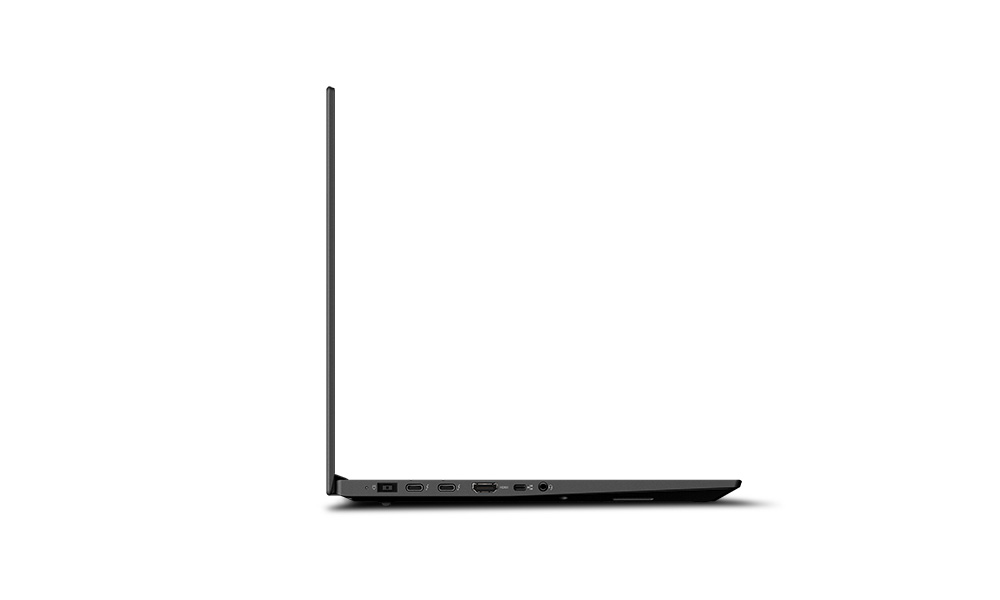
The P1’s weight and thickness are impressive, but you have to wonder if it took a system design hit — a less-sturdy chassis, or louder, more active internal fans — in order to push the form factor that much farther. As far as I can tell, the carbon-fiber top cover and magnesium-alloy bottom weren’t compromised in any way to reach the unusually low starting weight. And, according to Lenovo, the P1 has passed the requirements for 12 military-grade stress tests.
Of course, there are always some compromises when you need to keep the size as small as possible. In this case, the built-in stereo speakers are mounted underneath the unit, as opposed to being on top or on the two sides. That’s not a problem when the P1 is sitting on a tabletop, where the reflective surface can help to broaden the stereo separation. However, the speakers can sound a bit muffled when the P1 is placed on your lap or another sound-absorbing surface.
In terms of its overall design, the ThinkPad P1 is essentially a ThinkPad X1 Extreme with workstation-class components. The Core i7 CPU and Nvidia GeForce GTX 1050 GPU in the X1 Extreme are swapped out for a faster Core i7 or Xeon E-2176M CPU and either an Nvidia Quadro P1000 or P2000 GPU. Two RAM slots allow as much as 32GB in each. And there are two NVMe SSD slots, which allow as much as 2 TB in each.
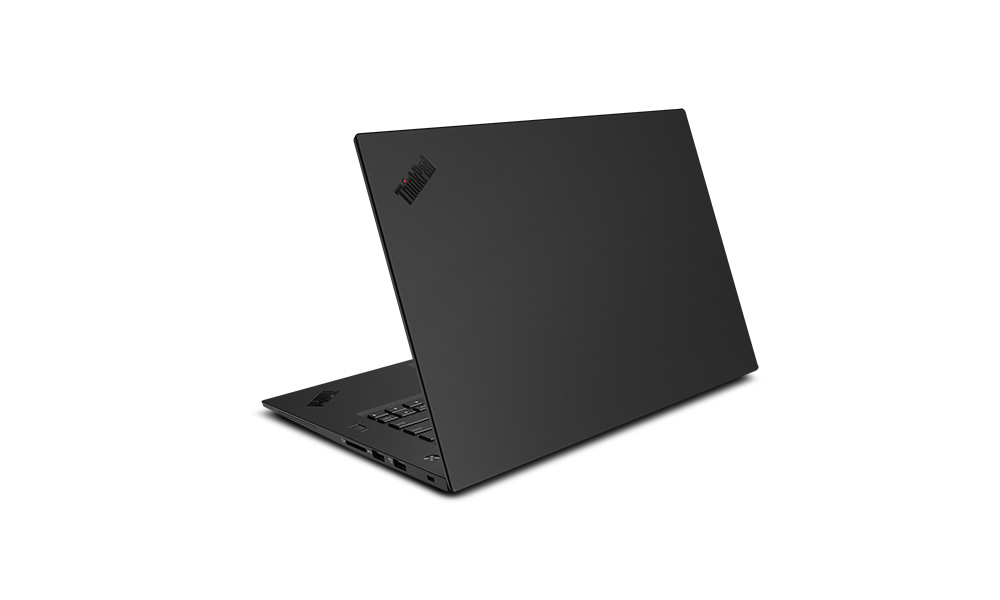
Our review unit was well-equipped for heavy-duty media manipulation. It had the fastest CPU option: the Intel Xeon E-2176M six-core processor with vPro. That processor usually runs at 2.70 GHz, but it can go as high as 4.40 GHz with Intel’s Turbo Boost Technology. It also came equipped with the fastest GPU option: the Quadro P2000 Max-Q with 4 GB. Though only half the maximum, the review unit had a more than a sufficient 32 GB of DDR4 RAM and 2 TB of NVMe SSD storage.
Maxing out the memory and storage would have added a whopping $2,805 to the price, so the system as configured for review would be more practical for most buyers. The review unit also came equipped with the UHD screen rather than the HD screen, even though that did increase the price by $670. It’s not just a matter of pixel resolution between the two IPS LCD display options (3840 x 2160 versus 1920 x 1080). The UHD version supports 100 percent of the Adobe color gamut, while the HD version supports only 72 percent. The UHD is 400 nits versus 300 nits for the HD version. And the UHD is a touchscreen, while the HD is not touch compatible.
Since the UHD option for the Lenovo ThinkPad P1 competes directly with the UHD DreamColor option for the HP ZBook Studio G5, I had hoped to compare the color gamuts between the two mobile 4K screens. Both support 100 percent of the Adobe RGB color gamut, but a better measure for 4K video work would be the more-demanding (and more-videocentric) DCI-P3 color gamut. The ZBook Studio supports 92 percent of the P3 color gamut. For comparison, the DCI-4K DreamColor desktop monitor (the HP DreamColor Z31x Studio Display) supports 99 percent of the P3 color gamut. Unfortunately, the P3 specification isn’t listed on the Lenovo website, and I was unable to get the color gamut coverage from Lenovo.
More subjectively, the UHD screen on the P1 does have excellent color saturation and differentiation. The displayed images stood out well with both moving and static content. Some of the satisfying pop from the colors did come from the glossy screen, which is susceptible to glare. Outside in strong sunlight, it was sometimes a challenge to position the P1 so that I could see the screen clearly. That said, the response time was very good for a mobile 4K screen. And there was no on-screen flickering with any video content that I threw at it. Overall, except for its sensitivity to glare, the UHD screen on the P1 was quite impressive.
Fast and Furious
Speed is one of the key standards for any workstation. (The other key standard is reliability.) A faster workstation will help you get the same amount of work done in less time. Or it will help you get more work done in the same amount of time. Given the review unit’s Xeon E-2176M mobile processor, fast DDR4 RAM, and Quadro P2000 graphics processor, this particular configuration should slice through work quickly. That’s certainly reflected in its outstanding Cinebench scores. Using the current 64-bit version of Cinebench (version 15.038), the P1 racked up a very fast 135.61 fps on the OpenGL benchmark and an equally impressive 1178 cb on the CPU benchmark. I don’t have comparative benchmark scores from the HP ZBook Studio G5. However, going back to last year’s HP ZBook Studio G4 (which used previous-generation components), the P1 is significantly faster — 135.61 fps versus 82.31 fps, and 1178 cb versus 730 cb.
Those stellar results were achieved when the P1 was connected to AC power. When I pulled the plug and the P1 fell back on its internal battery power, the Cinebench scores dropped to 60.11 fps on the OpenGL test and 677 cb on the CPU test. That’s still relatively fast for a mobile workstation. When I ran the battery-powered Cinebench tests, the P1 was on its “best performance” battery setting with the screen configured for 80 percent brightness.
Cinebench is an excellent benchmark for evaluating graphics rendering. And it’s available for free online. You could run it on your current system to determine how your workstation might compare with this particular P1 configuration.
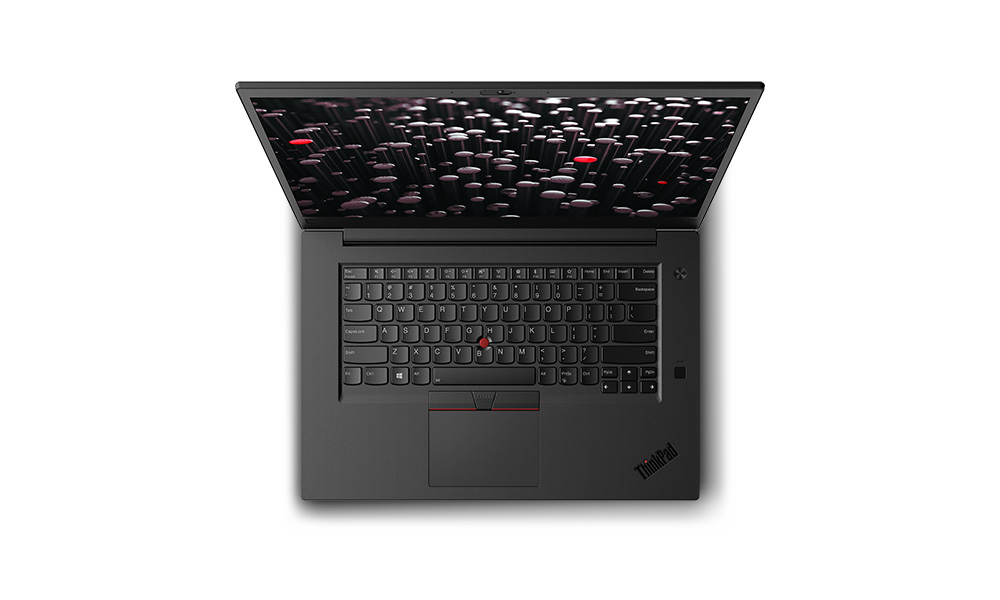
Lenovo claims that the P1 (on discrete graphics) can last as long as 7.36 hours with its internal 80 watt-hour battery. That would likely be true for a moderately equipped P1 when running a less demanding workload. If you have a fully loaded P1 running system-intensive media tasks, you may have a significantly shorter battery life. A better test for StudioDaily readers might be a video playback benchmark. I played a 1080p video file at full screen (3840 × 2160) with the display set to 80 percent brightness. The battery lasted 5 hours and 53 minutes before the P1 shut down on its own.
That may not sound very good when compared to a typical consumer laptop. Keep in mind, however, that there are always trade-offs. We want lightning fast speeds in a featherweight design with an extremely long battery life. With the current technologies, you can choose only two of the three (speed, weight, or battery life). Or you can accept a mix of compromises, among the three, that would be a good fit for your needs. With the P1 more than exceeding expectations in both speed and weight for a mobile workstation, a nearly six-hour battery life for video playback is a fair tradeoff.
Odds and Ends
Even with its thin and lightweight chassis, the P1 does provide a decent assortment of ports, connectors, and jacks. They include a single HDMI 2.0 port, two Thunderbolt 3 (Type-C) ports, and two USB 3.1 Gen 1 (Type A) ports. The tiny Ethernet port requires a specialized dongle that Lenovo includes with the P1. With this dongle attached, you can use a standard RJ45 Ethernet cable. It might be a good idea to pick up a spare dongle, in case you misplace the one that comes with the system. There’s the usual mini-combo mic/headphone jack and a full-size SD card slot.
As you would expect with the ThinkPad name, the P1 has an exceptional keyboard. That may or may not be a high priority for you, but over time, you may find it to be a worthy feature, especially if you tend to be away from your desktop computer for long stretches at a time. The P1 also has the ThinkPad’s iconic red nub-like pointer (the TrackPoint), which many people (myself included) prefer over the more usual touchpad. Not to worry, the P1 has both. And you can easily move back and forth between the two.
You can open up the P1 and perform limited upgrades. You’ll have to remove seven screws on the bottom of the unit in order to access the two SSD slots, two RAM slots, and Wi-Fi card slot. The review unit came with a single 2 TB SSD, which left the other slot open for a second drive. Since you can customize the RAM and SSD when you order online, you might try to keep those second slots open, so you can more easily add memory and storage later on, as prices come down or your needs change.
Conclusion
The Lenovo ThinkPad P1 is both powerful and extremely portable. It does lack some of the more advanced options on the HP ZBook Studio G5, such an integrated privacy screen and the ability to swap out the second drive for additional battery capacity. In its favor, the ThinkPad P1 is lighter and slightly thinner than the Studio G5, which can make a real difference if you’re carrying it with you all day.
For those working in 4K, the biggest difference between the two models might be the display. The DreamColor screen on the Studio G5 is 50% brighter with a matte-finish that’s better suited to handle glare. On the other hand, if you want a touch-sensitive 4K screen or compatibility with Dolby Vision HDR, the P1 may be your better choice.
